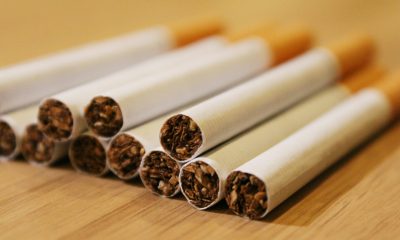EU
#JRC - European Commission Joint Research Centre opens world-class laboratories to researchers

 Researchers from across Europe will now have even more opportunities to use the Joint Research Centre's state-of-the-art facilities: after a first round of the open access initiative, in which nearly 100 eligible proposals were received from 92 research institutions, further laboratories of the Commission's in-house science and knowledge service are now available to external scientists. They will now also be able to run experiments on zero emission energy solutions and nuclear safety. With this initiative, the JRC aims to boost scientific research and competitiveness as well as increasing cooperation between European researchers.
Researchers from across Europe will now have even more opportunities to use the Joint Research Centre's state-of-the-art facilities: after a first round of the open access initiative, in which nearly 100 eligible proposals were received from 92 research institutions, further laboratories of the Commission's in-house science and knowledge service are now available to external scientists. They will now also be able to run experiments on zero emission energy solutions and nuclear safety. With this initiative, the JRC aims to boost scientific research and competitiveness as well as increasing cooperation between European researchers.
Education, Culture, Youth and Sport Commissioner Tibor Navracsics,, responsible for the Joint Research Centre, said: "The Joint Research Centre uses EU-funded, world-class facilities to help us tackle the most pressing challenges of our time, from climate change to food safety and nuclear security. I am very pleased that we are now doing even more to support others striving to solve societal problems by sharing our laboratories and facilities with bright scientists from all over Europe."
Since the Joint Research Centre (JRC) first opened its facilities in 2017, scientists from 21 EU and 3 neighbouring countries have been running experiments in 12 of the JRC's laboratories in Geel (Belgium), Ispra (Italy) and Karlsruhe (Germany). The initiative is now being extended to Petten (the Netherlands), home to the JRC's energy and transport research laboratories. Researchers from EU countries and countries associated with the Horizon 2020 research programme are invited to apply before 30 September.
Laboratories now open for testing new fuels and nuclear safety
Two facilities dedicated to developing hydrogen fuel technologies are now open in Petten: the high pressure gas tank testing facility and the fuel cell and electrolyser testing facility.
Hydrogen is one of the most promising alternative fuels, as it produces no carbon dioxide emissions. However, the technology is in its infancy and needs to be developed before it can be used instead of conventional fossil fuels. In Petten, researchers will conduct experiments on fuel cells and gas tanks under different environmental conditions.
The JRC is also opening two state-of-the-art laboratories designed for research on actinide materials in Karlsruhe. Actinide elements are the backbone of nuclear technologies, such as energy, space exploration or medical treatments. Scientists will be able to conduct exploratory research to help develop new nuclear equipment or materials.
From September, the JRC will also make accessible several of its European facilities for nuclear reaction and decay data measurements in Geel. Such measurements help to make nuclear reactors and the handling of nuclear waste safer, and enhance radiological protection for citizens and the environment.
Background
The latest opening of facilities follows a successful first two years of sharing the JRC's research infrastructure, with 12 completed projects and over 30 ongoing. Results of the first experiments are already having an impact.
For example, researchers from the Netherlands ran experiments using the largest Hopkinson bar machine in the world, at the European laboratory for structural assessment in Ispra. They needed this machine to test the resistance of adobe 'mud brick' materials against blasts or explosions. Adobe structures are found all over the world, including in places involved in military conflicts or prone to natural hazards. Thanks to the results of these experiments, soldiers on peacekeeping missions can now get more information on how well the buildings they are operating in can protect them.
Nuclear researchers from Romania ran experiments at the JRC's GELINA facility in Geel, which is used to measure the behaviour of neutrons with a very high level of accuracy. As neutrons are a key component of nuclear reactions, accurate data are essential for the success of cutting-edge nuclear technologies – from effective, targeted cancer treatments to safe energy with minimal waste.
A dedicated public portal has been set up with information on all aspects linked to the JRC Research Infrastructure Open Access initiative, including the publication of calls for proposals, information on the conditions and criteria for access as well as the submission process. The JRC will not make a profit from opening up its facilities to outside users.
More information
Share this article:
-

 World4 days ago
World4 days agoDénonciation de l’ex-emir du mouvement des moujahidines du Maroc des allégations formulées par Luk Vervae
-

 Moldova4 days ago
Moldova4 days agoFormer US Department of Justice and FBI Officials cast shade on the case against Ilan Shor
-

 Ukraine5 days ago
Ukraine5 days agoEU foreign and defence ministers pledge to do more to arm Ukraine
-

 China-EU4 days ago
China-EU4 days agoCMG hosts 4th International Chinese Language Video Festival to mark 2024 UN Chinese Language Day























